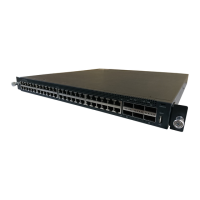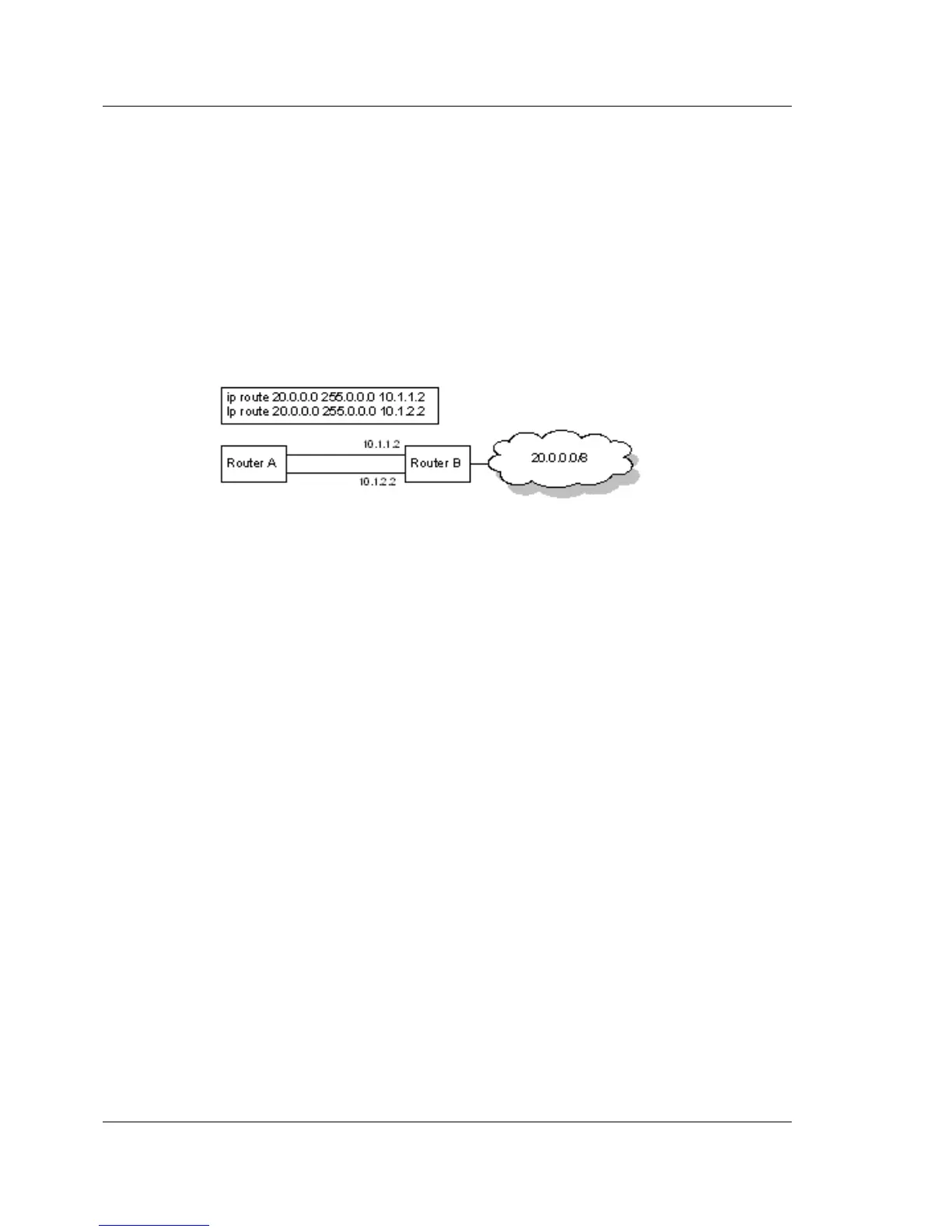FUJITSU PSWITCH User’s Guide
134 December/2018
Using ECMP, a device can forward traffic over multiple paths to a specified
destination and take advantage of the bandwidth of both links.
ECMP routes are statically configured or dynamically learned as follows:
Configured Statically: If an operator sets multiple static routes with different
next hops to the same destination, those routes are treated as one route with
two next hops.
Learned Dynamically: Routing protocols can learn ECMP routes. For example, in
Figure 3-14, OSPF is configured on two links connecting Router A and Router B.
Router B advertises its connection to 20.0.0.0/8, then Router A calculates the
OSPF route to 20.0.0.0/8 with next hop 10.1.1.2 and 10.1.2.2.
Figure 3-14: A Static Route with Two Next Hops
Both static and dynamic routes are stored in a single combined routing table. In
the software of this product, this routing table is called RTO. Note that RTO accepts
ECMP routes, but RTO does not combine routes from different sources to create
ECMP routes. In Figure 3-14, assume that OSPF is configured only on one of the
links between Router A and Router B. On Router A, OSPF reports to RTO the route to
20.0.0.0/8 where 10.1.1.2 is the next hop. If the user configures a static route to
20.0.0.0/8 that has 10.1.2.2 as the single next hop, RTO will not combine the OSPF
and this static route as one route to 20.0.0.0/8 with two next hops. All next hops
within an ECMP route must be provided from the same source.
In the system of this product, the ECMP hash support has been expanded to the
Enhanced hash mode, and the performance of load balancing has improved. ECMP
hashing on these platforms has the following features:
Modulo operation based on the number of next hops N in the route.
Selection of packet attributes based on packet type. In the case of IP packets,
the fields of source IP address, destination IP address, TCP / UDP port, IPv4
protocol, IPv6 next header are used.

